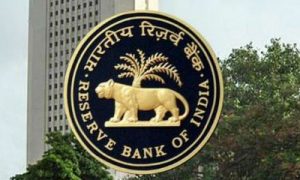Have you ever been frustrated when you received your salary? Did you ever look at your payslip and wonder, this is much lesser than what I had expected? Did you ever scrutinise the myriad deductions like EPF and TDS and wonder what they are?
These deductions have actually been designed to make your life easier, not harder. If you want to know more about EPF and its benefits, keep reading!
What Is EPF & Its Benefits?
EPF or Employee Provident Fund is one of the government-run saving schemes. Meant for salaried employees, this scheme provides a neat way of saving on income tax.
Imagine you have just joined a company. Your base salary is ₹15,000. Let’s assume the PF contribution is 10% of the base salary.
This means that every month, ₹1,500 will be deducted from your account and credited to your PF account. At the same time, your employer will match this contribution and add an extra ₹1,500 to your PF account per month.
Thus, ₹3,000 will be added to your PF account every month.
Now, coming to the contribution, this generally ranges between 10-12%. There is an upper limit on the EPF contribution. 12% of ₹15,000 is the maximum that your employer can contribute every month.
Is EPF Compulsory?
No, EPF is not compulsory. It depends on your preference. You can choose to opt in or out for this facility. You will need to make this decision at the time of joining.
Please think about it carefully, though. Once you hop on the EPF train, you cannot disembark. You cannot change your mind once you start the process.
The only caveat is if your base salary is lower than ₹6,500 per month. In this case, you have to opt for EPF.
Read More: EPFO Update: PF Interest money not credited in your EPF account? Finance Ministry says THIS
Why Should You Opt For EPF?
Capital Gains
Any money added to your EPF account earns interest at 8%. This is considerably higher than what you get in a normal savings account or even in a fixed deposit scheme. In fact, the interest income on EPF is one of the highest that you will get.
Retirement fund
EPF is further subdivided into other schemes to ensure a smooth financial plan for you. One part of that is the Employee Pension Scheme. About 8.5% of the employer’s contribution is credited directly to the Employee Pension Scheme. Here, it accumulates to generate a sizable nest egg for your retirement.
Tax Benefits
Contributions up to ₹2.5 lakhs per year are exempt from taxation. This means any amount that gets deducted from your salary and credited to your EPF account can actually be a deduction from your income tax liability.
Also, any interest that you earn on the EPF account is entirely exempt from taxation.
Easy Withdrawal
The withdrawal process is actually quite simple. There are a couple of online forms that you have to fill out, and the money is yours to claim!
Why Should Women Opt For EPF?
There are many reasons why women should opt for EPF. The main one is to take advantage of the benefits offered under this scheme.
Women are owning it in every walk of life. More women are becoming financially independent every single day. If there are facilities available from the government that make this process easier, then you should use those facilities.
In fact, in order to encourage more female participation in the EPF scheme, the government has actually reduced the employee contribution portion to 8% from 12%. The employer will still contribute 12%.
This means that for the first three years of your job, if you want to keep more money on hand, you can opt for a slightly lower contribution. It will have no impact on your employer’s share and will empower you even more.





































